React is a JavaScript library used for creating user interfaces (UIs). The best React UI framework for you is one that fits your needs and targets that provides flexibility and simplicity.
React is a complicated framework, but it simplifies building UIs with JS once you've learned it. Due to its responsiveness and accessibility, well-known companies, including Netflix, PayPal, Airbnb, Salesforce, Reddit, and Instagram, use this framework.
As the UI framework is the backbone of every project, I'll review 9 of my favorite React UI frameworks in this article.
- Material UI – Overall Best React UI Framework
- Iconic Framework – Best UI Framework for mobile SDK for web
- Evergreen – Best minimal React UI framework
- Nativebase.io – Best front-end UI framework React Native
- Grommet – Best React UI framework for responsiveness
- React Bootstrap – Most popular framework for React
- BlueprintJS – Best for dashboards
- StoryBook – Best for UI Development and Documentation
- Smaato – React and SCSS Framework
The Top 9 Best React UI Frameworks
Here are nine React UI frameworks that are worth checking out.
1. Material UI – Overall Best React UI Framework
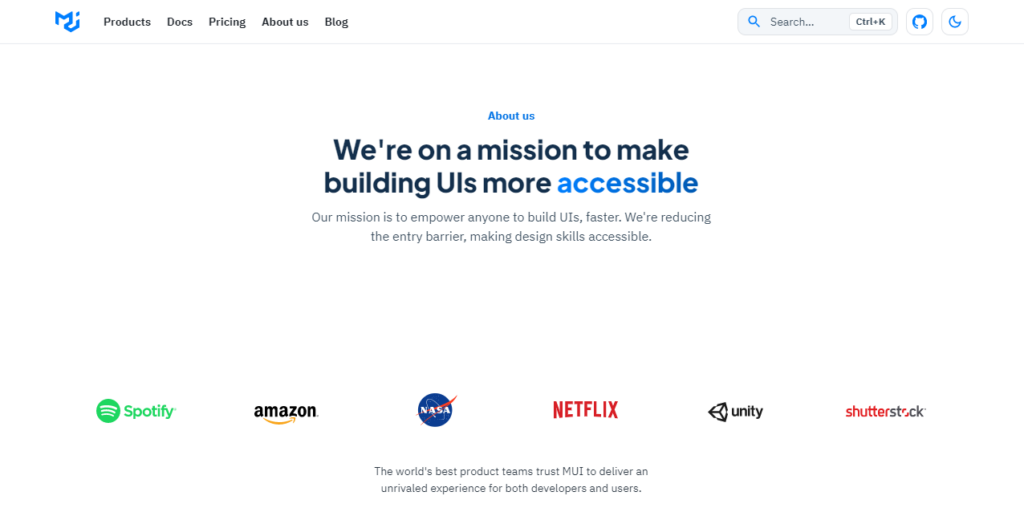
Material UI (MUI) offers pre-built material components and themes for building user interface elements using React. Navigational tools, sliders, drop-down menus, and many more customizable features are all included in the Material UI. The MUI components follow Google Material Design guidelines, which accelerates the application.
For aiding in creating native mobile apps, the Material UI provides a wide range of tools and APIs. MUI offers automated color changes and compatibility across CSS-based modules and style components.
A large and active community of front-end developers prefers MUI. The framework assists novice programmers with detailed documentation.
Why is Material UI the best of all UI Frameworks?
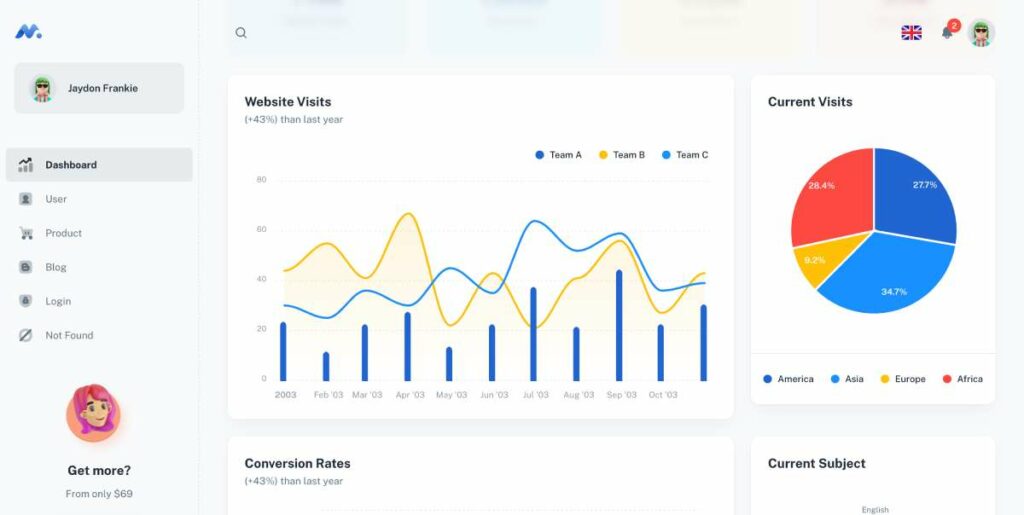
Material UI is one of the best frameworks because it combines the best of Google's design components in a single, beautiful package.
Material Design has been praised as one of the most important design movements in recent years. MUI takes this technology to the next level.
MUI is built on top of the latest web technologies like CSS Grid and Web Components (Shadow DOM and Custom Elements), which means your app will be future-proofed for the next decade or more.
The framework provides a unified set of components for creating gorgeous interfaces across all platforms: Android, iOS, and Web.
Here is an example code for “Button” element build with MUI:
import * as React from 'react';
import Button from '@mui/material/Button';
export default function MyApp() {
return (
<div>
<Button variant="contained">Hello World</Button>
</div>
);
}2. Iconic Framework – Best UI Framework for Mobile SDK for Web
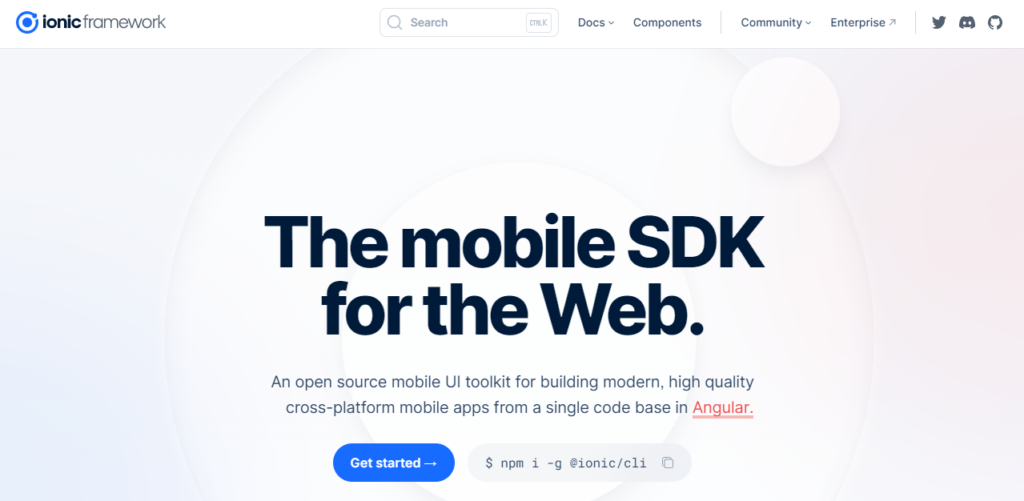
Ionic framework is a JavaScript-based open-source software development kit (SDK) designed for creating hybrid mobile applications. Its first release in 2013 by the Ionic Team at Drifty Co. used AngularJS and Apache Cordova as its building blocks. It was changed more recently to become a collection of web components.
With Ionic, you can now build applications using any front-end framework, including Angular, React, or Vue.
This is an example of how “Button” element is coded with Iconic and React:
import React from 'react';
import { IonButton } from '@ionic/react';
function Example() {
return (
<>
<IonButton>Default</IonButton>
<IonButton disabled={true}>Disabled</IonButton>
</>
);
}
export default Example;Using basic web technologies like HTML, CSS, and Sass, developers can build applications using Ionic's hybrid development tools before porting them to mobile app stores using Cordova containers.
The Cordova app container is installed on the device (much as a native app would), but the app connects to any mobile platform's capabilities through an embedded browser.
Device-specific functions like the GPS, camera, or flashlight for mobile devices are accessible to Ionic applications.
Why is Iconic UI Framework SDK Best for Web?
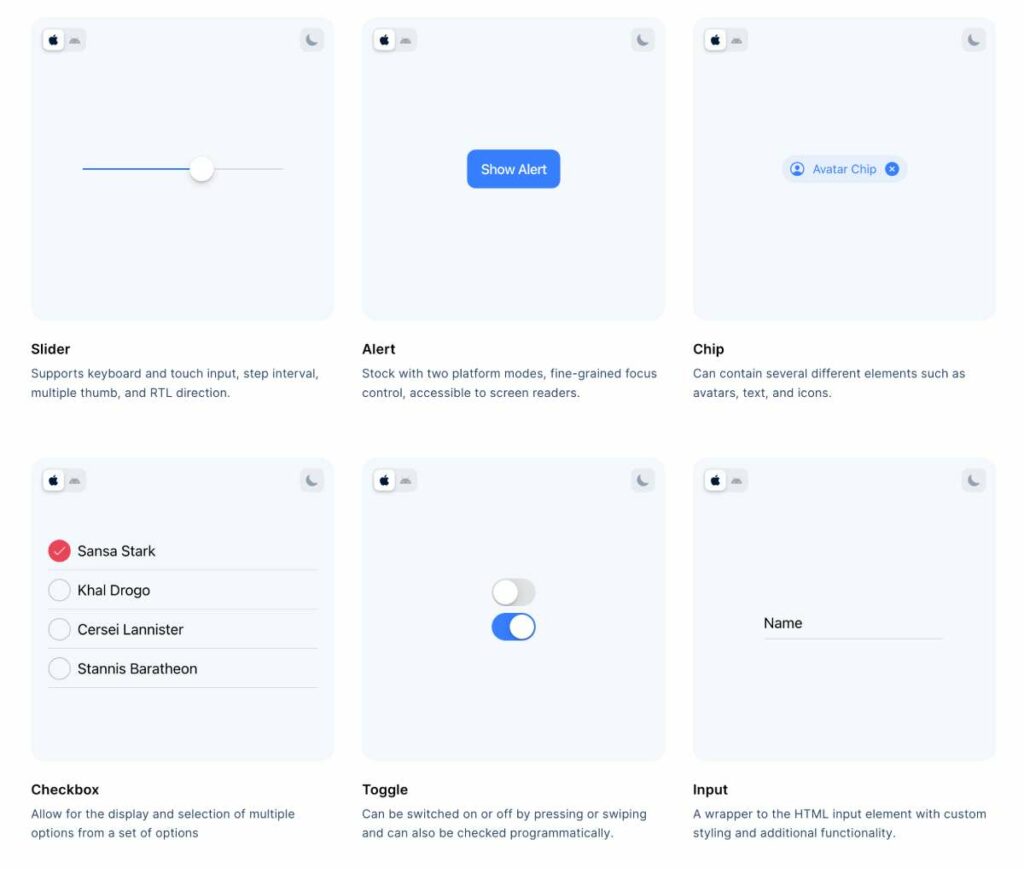
Ionic's significant V4 version, which completely rebuilt the SDK to fit with the now-industry-standard web components framework, was published in 2019.
This created many new options for Angular, React, or Vue.js developers and increased the functionality of contemporary applications like Progressive Web Apps (PWAs).
With this release, Drifty Co. has vowed to make Ionic the go-to app development platform for all web developers.
Ionic V4's most significant modifications are:
- Extra assistance for the front-end frameworks Angular, React, and Vue.js
- Navigational improvements with Angular Router
- Leverage the Custom Elements and Shadow DOM APIs in contemporary browsers to construct web components.
- 50% quicker as a result of improved component reworking
- Stencil, an efficient web compiler intended to be the finest PWA compiler right out of the box, has been included.
Consider using one of the newly supported front-end frameworks for your next project since each has unique benefits.
Check out the Iconic Framework here.
3. Evergreen – Best Minimal React UI Framework
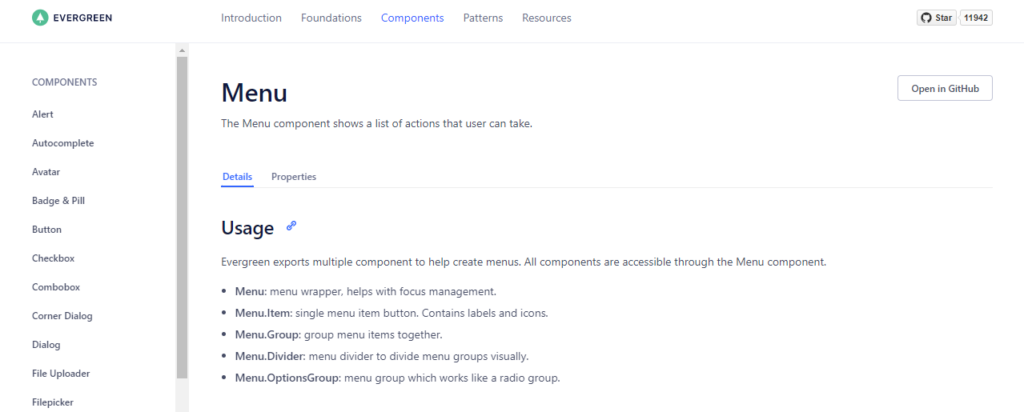
With more than 30 components, Segment created the Evergreen React UI framework. The components are designed using applicable patterns on the basic React UI. The Evergreen Figma library and the default and classic themes ease the creation of CSS components.
Evergreen includes a selection of React modules with React Primitive as a CSS library for React. The revised theme API in Evergreen v6 allows for more flexibility and accessibility.
Why is this the best minimal react UI framework?
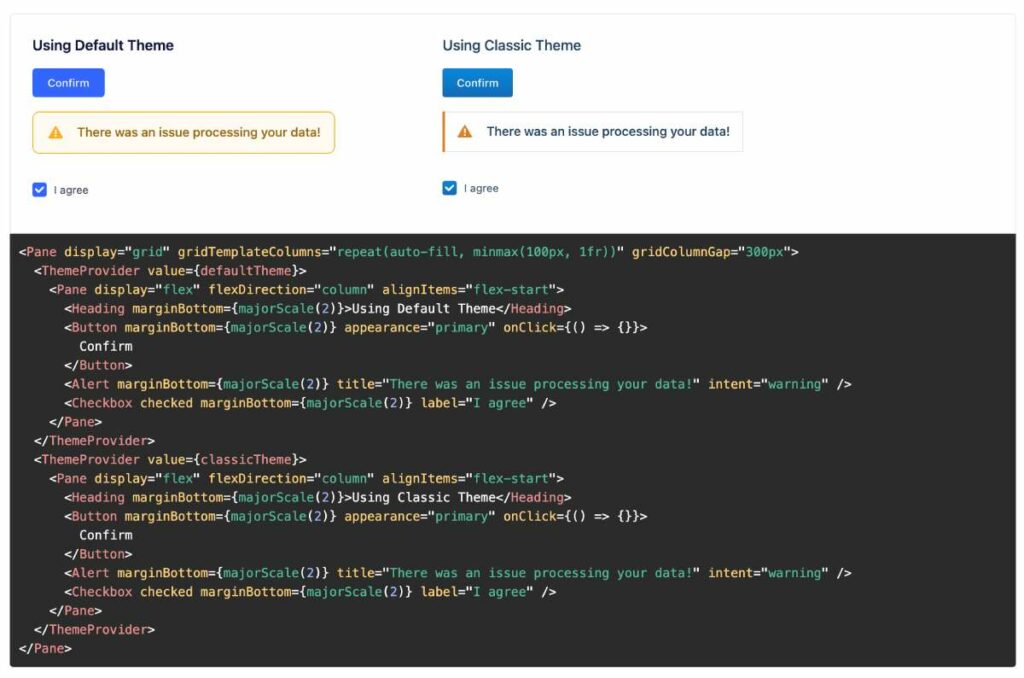
Evergreen is known to be the best minimal react UI framework because it comes with a minimal design in its UI elements.
Evergreen provides a set of components with pre-built mixins that can be used in your app or website. This way, you'll get up and running quickly and save time building new features on top of these.
Check out Evergreen Framework here.
4. NativeBase.io – Best Front-end UI Framework React Native
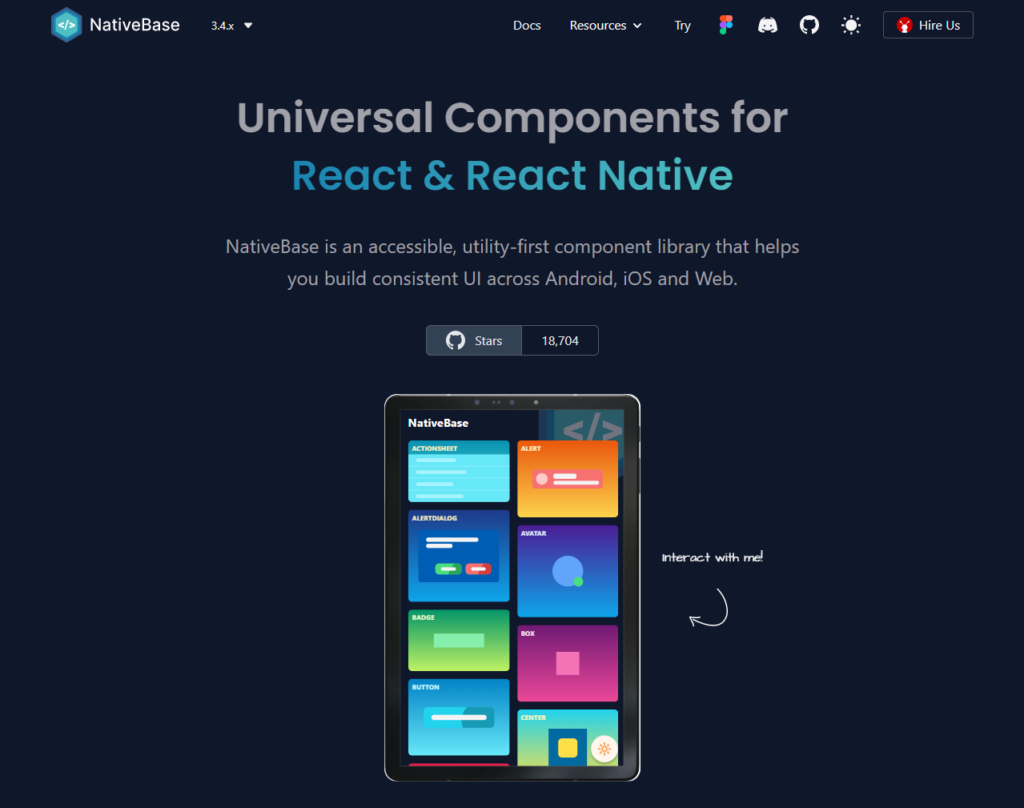
One of the most well-liked React Native libraries is NativeBase, which has approximately 12,000 GitHub stars. It gives developers a wealth of cross-platform components to use in their React Native applications.
Any level of developer may generate MVPs with NativeBase. The fact that you may use this library with any other third-party libraries is its most significant benefit.
This implies that you can use NativeBase and other resources to build a large project.
A developer may make their own small or medium-sized project also using solely NativeBase components. It offers several valuable features, including customizable theme layouts and starting sets.
Why is NativeBase Best for front-end development?

I consider it the best because of a lot UI front-end elements this framework offer for web application and mobile applications. There also a lot of options skins for each different element.
There are no sacrifices in the User Experience of the apps since the applications' stack of components is constructed using native UI components. NativeBase focuses on the UI interactivity and visual appeal of your app. Without a doubt, NativeBase works well with mobile apps and reduces the size of the front end of your project.
Check out NativeBase Framework here.
5. Grommet – Best React UI framework for Responsiveness
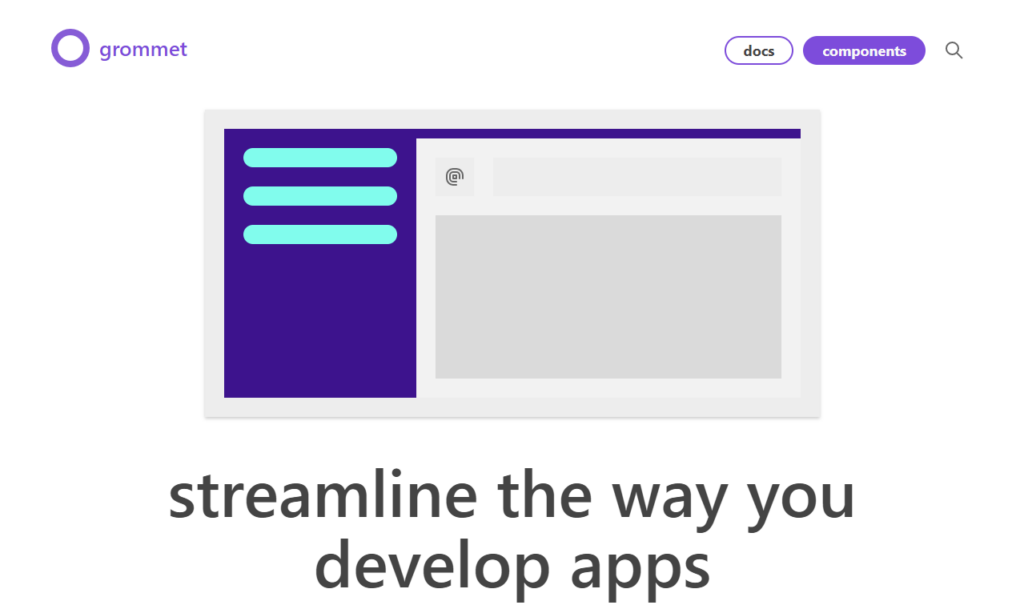
Consider utilizing Grommet if you're seeking a complete web design solution. It is a user-friendly choice with many beneficial UI elements and comprehensive instructions for using the coding language, layout, and other things.
In actuality, Grommet concentrates on providing many layout components that are absent from other UI frameworks. Various design templates, patterns, and sticker sheets are also included.
Grommet offers fewer customization options than some other UI frameworks. Beginners might enjoy its simplicity, while other users could feel constrained.
The framework also uses an external CSS system, so you must be cautious when using global styles in your writing.
Why is Grommet the best react UI framework for responsiveness?
Below you can check our test we have done for the responsive:
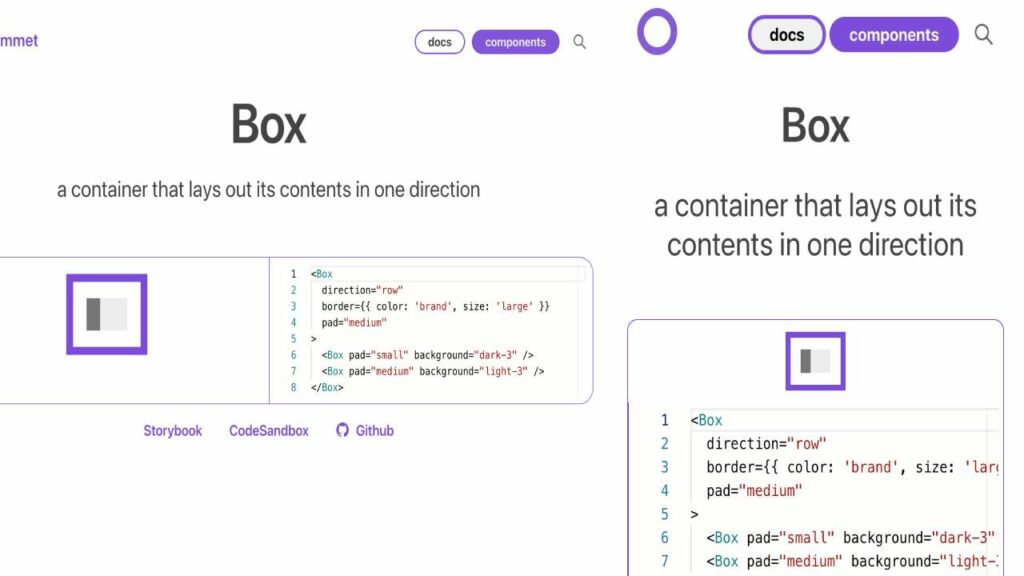
With its mobile-first, accessible, and responsive components, Grommet's primary goal is to enhance the developer experience and speed up the creation of React apps.
The responsive components make it a cross-platform for mobile and web without losing time on coding separately for each version.
With Grommet, screen reader support is also included. Theme variations like dark mode may be put up using the themeMode parameter in a React application.
Check out the Grommet Framework here.
6. React Bootstrap – The Most Popular Framework for React
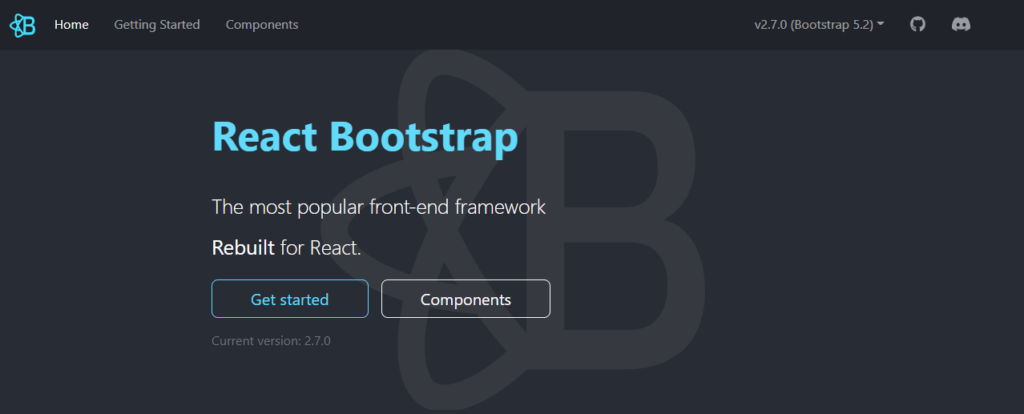
Consider React Bootstrap if you want a front-end React UI framework to develop web components. With good reason, it is one of the most popular choices.
With no reliance on iQuery, React Bootstrap offers a 100% React experience. As it is one of the first React libraries, it has many components.
After designing your applications in the back end, you can prototype them using this UI framework. React Bootstrap may be an excellent option for developer teams working on various app components.
Yet, the design of the interface may appeal to something other than back-end developers.
Why is React-Bootstrap the best framework for React?

React Boostrap is the most used framework out there because of the usage of the famous front-end Bootstrap framework that it was built-in. You can also read more about Boostrap and similar frameworks here: Bootstrap vs Flexbox
Boostrap library contains various elements that may be used to create complex user interfaces, such as buttons, input fields, navbars, and carousels. Additionally, it offers tools for dealing with grid layouts, data tables, and form fields.
Check out React-Bootstrap here.
7. BlueprintJS – Best for Dashboards

The BlueprintJS React components are intended for desktop applications. These parts are very well suited for creating intricate, data-heavy interfaces.
You may take portions of code to create and display icons, work with dates and times, select time zones, and more from the component library.
Why is BlueprintJS Best for Dashboard?
Here you can check an example of a “Table” element and the code that it is used.
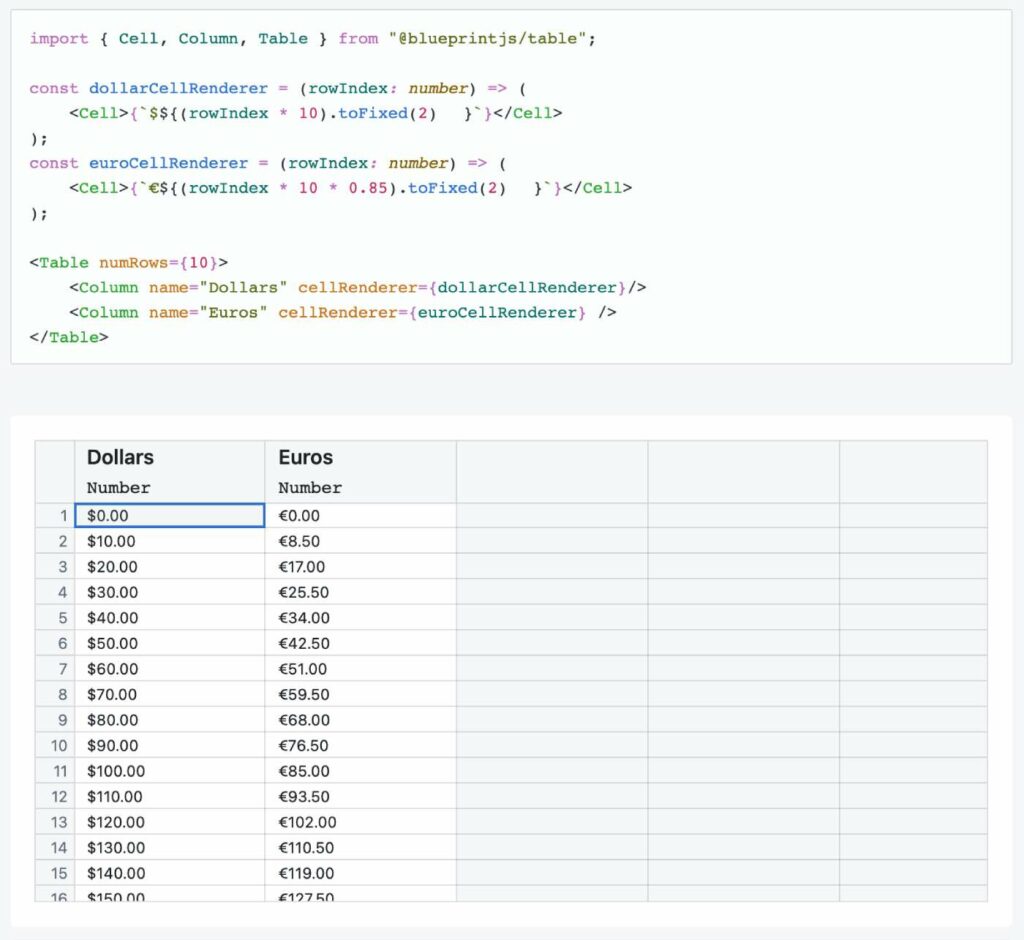
BlueprintJS is the best option for dashboards and data web interfaces because it offers UI elements like graphs and data sets and data elements which can help you a lot.
With the help of Webpack, you can load external resources like images, fonts, or CSS files into your project without worrying about the file format or size limits imposed by your server or client.
Check out BlueprintJS Framework here.
8. StoryBook – Best for UI Development and Testing

The trend of Storybook has been around for a while. It is an open-source tool for creating UI components for React and many other technologies and platforms. But it isn't a component library in and of itself.
You can always check the most recent major release and any incremental changes on the Storybook release page. The GitHub repository for Storybook has hundreds of stars.
Framework lets you customize the UI elements from their dashboard using their interface.
Why is StoryBook Best for Creating UI Elements Development and Documentation?
The free software simplifies all phases of UI testing and documentation. Additionally, it provides a browser sandbox where interfaces may be developed without affecting the data needs, APIs, or business logic, making it easy to manage complex development needs.
Check out StoryBook Framework here.
9. Smaato – React and SCSS Framework
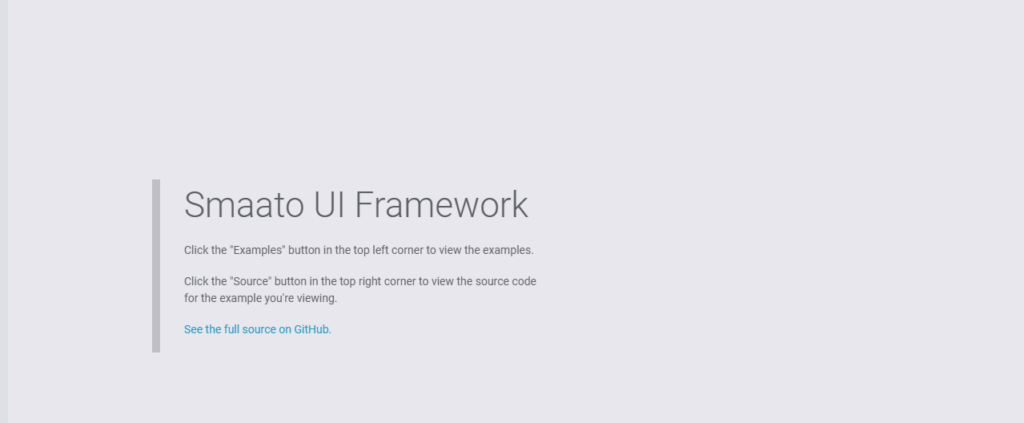
Smaato is a UI framework that speeds up development through the usage of SCSS and React Library.
As you know SCSS is a CSS framework that will help you build your front-end styling faster and easily customizable through variables.
Why use the SCSS library?
It's written in SCSS and compiled into CSS. You can write your stylesheets with the framework. Still, you'll also be able to use our predefined stylesheets and adapt them to your needs.
It's easy to extend and customize the base styles of the framework. You can add new classes, variables, and mixins to create new elements without any code changes to the rest of your project.
FAQ
Material UI (MUI) is the most popular React UI framework for web development that includes a massive library of elements and templates that can all be altered to suit your requirements.
You should use React UI framework because will help you build faster by reducing duplication and allowing you to focus on the unique aspects of each component's functionality. It will help your team stay on the same page since components are designed to work together as a cohesive system instead of being implemented individually.
A React framework creates interactive user interfaces and online applications. Facebook created this open-source framework to help people start with boilerplate code that covers functions often repeated by most applications.
Concluding Thoughts
React is a framework ready to prove that it's the best option for building interfaces. With a thriving community, smooth performance, and even better documentation, this library has everything you'd want to help you build a professional UI in the browser. With React, you don't have to think too hard about which framework to use when building your app. You can focus on what matters most: creating an excellent user interface.
As one of the co-founders of Codeless, I bring to the table expertise in developing WordPress and web applications, as well as a track record of effectively managing hosting and servers. My passion for acquiring knowledge and my enthusiasm for constructing and testing novel technologies drive me to constantly innovate and improve.
Expertise:
Web Development,
Web Design,
Linux System Administration,
SEO
Experience:
15 years of experience in Web Development by developing and designing some of the most popular WordPress Themes like Specular, Tower, and Folie.
Education:
I have a degree in Engineering Physics and MSC in Material Science and Opto Electronics.



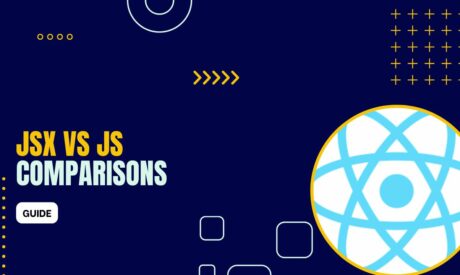
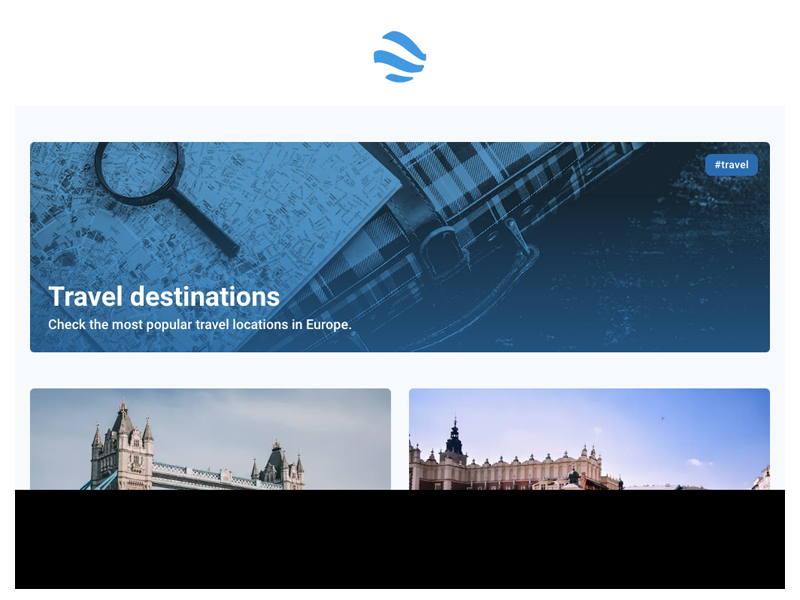
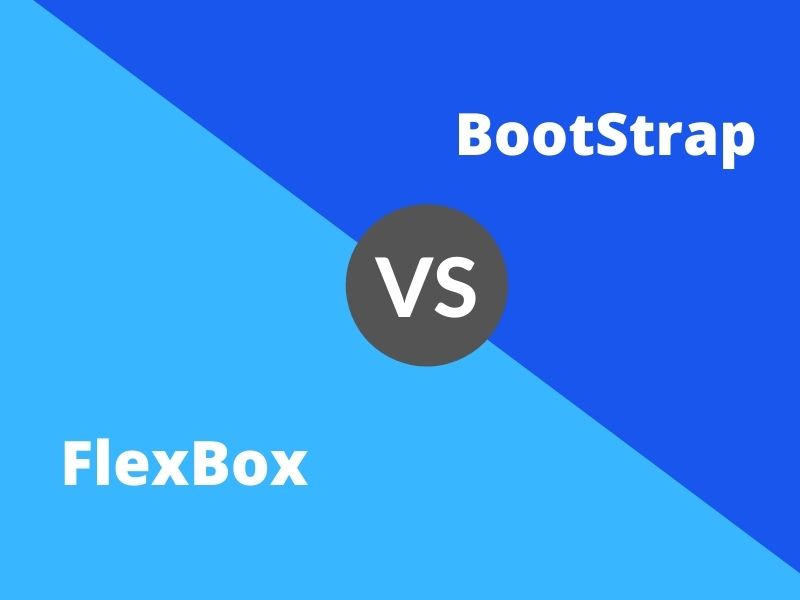
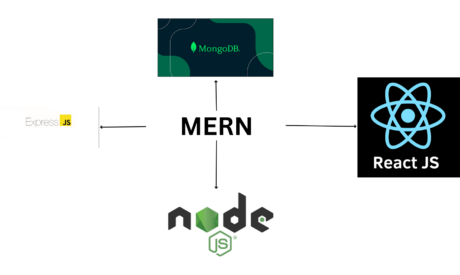
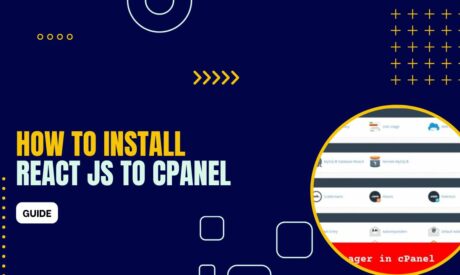
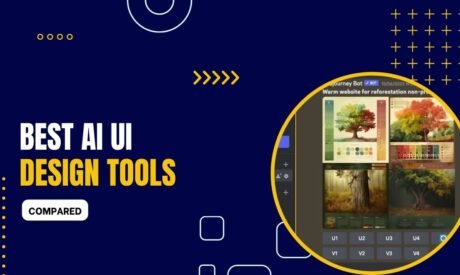
Comments